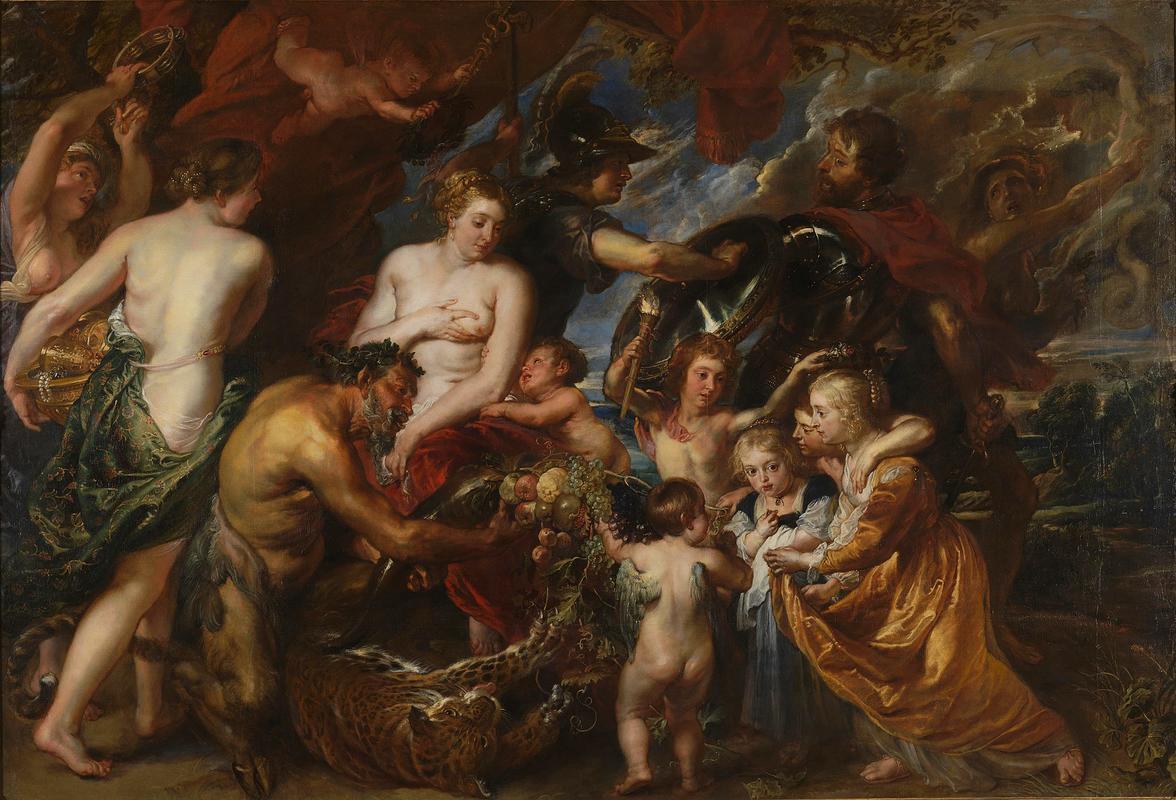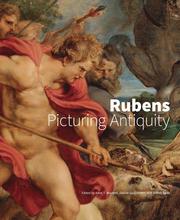More about Minerva Protects Pax from Mars
- All
- Info
- Shop

Contributor
After the death of his wife Isabella, Peter Paul Rubens set down his paintbrush (with significant exceptions, like Minerva Protects Pax from Mars) and started to work as a diplomat in the Anglo-Spanish war instead.
When the wildly successful Baroque artist Rubens began his work as a diplomat for Philip IV of Spain, he received harsh criticism from leaders who saw him as a painter and therefore not a real diplomat. He was kind of like the Leonardo DiCaprio of the 1600s, except he represented peace instead of environmentalism. Initially, people didn’t trust it - DiCaprio is an actor, not an environmentalist, and Rubens was a painter, not a diplomat. Over time though, people adjusted and saw Rubens as the successful envoy that he was. In fact, one of Rubens’ harshest critics, King Charles I of England, would later become one of Rubens’ greatest supporters. Toward the end of the Anglo-Spanish War, Charles I specifically requested Rubens to come to his court as the Spanish envoy. And Rubens turned out to be the perfect man for the job, because he felt deeply and personally affected by the war. He wrote to the French philosopher Nicolas-Claude Fabri de Peiresc in a letter saying, “I hope that his Holiness and the King of England, but above all the Good Lord Himself will intervene to smother the flames, which currently threaten to spread across and devastate the whole of Europe.” Dramatic words from a dramatic guy.
Rubens ultimately played a significant part in the successful negotiation for peace between England and Spain, and afterward, he painted this masterpiece, which is also known as Allegory on the Blessings of Peace. He presented this painting to King Charles as a gift from King Philip IV of Spain for their successful negotiation. King Charles then knighted Rubens and commissioned him to paint the royal Banqueting House, a highly sought-after commission due to the fact that it had been constructed by the famous architect Inigo Jones. It just goes to show how far a well-timed gift can take you in the world of networking.
The painting itself does exactly as its title suggests. It draws out an allegory between the mythological gods and the necessity of ending the brutal Anglo-Spanish War. At the center of the painting is Ceres, the goddess of Earth, who is a god of peace. To Ceres’ right is Minerva, the goddess of wisdom, driving away Mars the god of war and Alecto the god of fury. Ceres, meanwhile passes out fruit to the depicted children. Researchers later identified the portraits of the children to be those of Rubens’ host during his time in England, Sir Balthasar Gerbier. Gerbier was a highly talented diplomat, skilled in architecture, mathematics, painting, and the design of royal entertainments. Perhaps painting the children was Rubens’ strange way of thanking Gerbier for his hospitality, or perhaps it was just incredibly convenient to paint the nearest children. We may never know.
Although Rubens’ journey started with tragedy (the death of his wife) it ultimately moved in a beautiful circle. Rubens’ journey and eventual success as a diplomat led him back to the thing he loved most - painting. In 1630, just after working to negotiate peace, Rubens was knighted by Philip IV of Spain before fully retiring from diplomacy, moving back to Antwerp, remarrying, and beginning to paint prolifically for the last decade of his life, in which he produced some of his most famous works like Venus and Adonis and The Origin of the Milky Way.
Sources
- "Allegory on the Blessings of Peace by RUBENS, Peter Paul." Triptych of the Adoration of the Magi by BOSCH, Hieronymus. Accessed July 31, 2018. https://www.wga.hu/html_m/r/rubens/30allego/05allego.html.
- Gallery, London The National. "Peter Paul Rubens." The National Gallery. Accessed July 31, 2018. https://www.nationalgallery.org.uk/artists/peter-paul-rubens.
- Gallery, London The National. "Minerva Protects Pax from Mars (Peace and War)." The National Gallery. Accessed July 31, 2018. https://www.nationalgallery.org.uk/paintings/peter-paul-rubens-minerva-….
- Saldivar, Steve. "10 Reasons Peter Paul Rubens Is the Ultimate Renaissance Man." The Getty Iris. September 06, 2016. Accessed July 31, 2018. http://blogs.getty.edu/iris/10-reasons-peter-paul-rubens-is-the-ultimat….
- Scribner, Charles. "Peter Paul Rubens." Encyclopædia Britannica. June 24, 2018. Accessed July 31, 2018. https://www.britannica.com/biography/Peter-Paul-Rubens.
Featured Content
Here is what Wikipedia says about Minerva Protecting Peace from Mars
Minerva protecting Peace from Mars or Peace and War is a painting by Peter Paul Rubens. He produced it in London between 1629 and 1630, during a diplomatic mission from the Spanish Netherlands to Charles I of England. It is now in the National Gallery, London.
It shows Minerva (goddess of war, wisdom and crafts) fighting off Mars, with the nude figure of the goddess Pax (commonly known as "Peace" in English) in the centre.
Check out the full Wikipedia article about Minerva Protecting Peace from Mars















